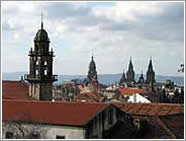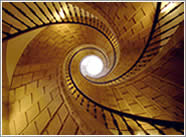 The School is mainly addressed to young people coming from different disciplines with a common interest in variational problems defined by curvature energy functionals. An elementary background in Differential Geometry and Variational Calculus will be helpful, although short introductory basic issues can be considered within the courses' scope. The school's courses will be scheduled in morning and afternoon sessions.
The School is mainly addressed to young people coming from different disciplines with a common interest in variational problems defined by curvature energy functionals. An elementary background in Differential Geometry and Variational Calculus will be helpful, although short introductory basic issues can be considered within the courses' scope. The school's courses will be scheduled in morning and afternoon sessions.
During the morning sessions the courses will essentially deal with the theoretical study of curves and surfaces which are minima or, more generally, critical points of energy functionals depending at most quadraticaly on their curvatures; these families of curves can be used to construct mathematical models of, for example, geodesics, relativistic particles (massive or massles) and elastic curves under different constraints. On the other hand the critical surfaces for this type of energies include not only very important families of classical surfaces (minimal and constant mean curvature surfaces, Willmore surfaces, etc…) but also they allow remarkable applications to Biophysics and Engineering, because they serve as ideal models for interfaces separating certain materials and/or fluids. Special attention will be paid to study of energies used to model biomembranes and vesicles and liquid crystals. The theoretical results can be set in contrast against actual experimental results obtained in the laboratory, and some modifications in the energy will be introduced in order to allow the description of more complex phenomena such as the adherence and contact of vesicles with rigid surfaces (wetting), colloids, polymers, esmetic liquid crystals, elastic wires and DNA, etc…
In the afternoon sessions more computational aspects will be considered and discussed on a practical basis. Not only from a purely computational point of view but also by studying graphic representation of critical points and numerical approaches.
 The duration of the school will be two weeks covering a total of 50 lecture hours (30 theory hours and 20 practice hours). The first week has an “applications to the Physics” flavour while the second one is more focused on applications in BioPhysics. Contents within one week can be followed independently from the contents in the other. Each week, three 5 hour mini-courses in the morning segment and one 10 hour practical course in the afternoon segment will be offered. Morning will be devoted to develop the most theoretical topics (basics and/or advanced) in three one-hour sessions, including also possible presentations from those people attending the course. Practice courses in the afternoon will be given in sessions of two hours daily.
The duration of the school will be two weeks covering a total of 50 lecture hours (30 theory hours and 20 practice hours). The first week has an “applications to the Physics” flavour while the second one is more focused on applications in BioPhysics. Contents within one week can be followed independently from the contents in the other. Each week, three 5 hour mini-courses in the morning segment and one 10 hour practical course in the afternoon segment will be offered. Morning will be devoted to develop the most theoretical topics (basics and/or advanced) in three one-hour sessions, including also possible presentations from those people attending the course. Practice courses in the afternoon will be given in sessions of two hours daily.
Theory courses will be given by:
- Prof. Manuel Barros (Universidad de Granada. Spain)
- Prof. Jan Kierfeld (Max Planck Institute of Colloids and Interfaces. Potsdam. Germany)
- Prof. Reinhard Lipowsky (Max Plank Institute of Colloids and Interfaces. Potsdam. Germany)
- Prof. Bennett Palmer (Idaho State Univ. Pocatello. USA)
- Prof. Christian Santangelo (University of Massachusetts. Amherst. USA)
- Prof. David Singer (Case Western Reserve Univ. Cleveland. USA)
Afternoons will be devoted to develop the practical activities of a numerical, computational and graphic character and with a special attention to the development and implementation of software packages. Practice courses, focused on computational aspects will be given by:
- Prof. J. Carlos Díaz-Ramos (University College Cork. Ireland)
- Prof. Josu Arroyo (Universidad del Pais Vasco. Spain)
The International Graduate School will take place in the Faculty of Mathematics of the University of Santiago de Compostela.
Óscar J. Garay |
Eduardo García Río Departamento de Xeometría e Topoloxía Facultade de Matematicas Universidade de Santiago de Compostela 15782 Santiago de Compostela Spain |
||
| E-mail: oscarj.garay@ehu.es | E-mail: xtedugr@usc.es |
Vázquez Informática Padrón (La Coruña) |
